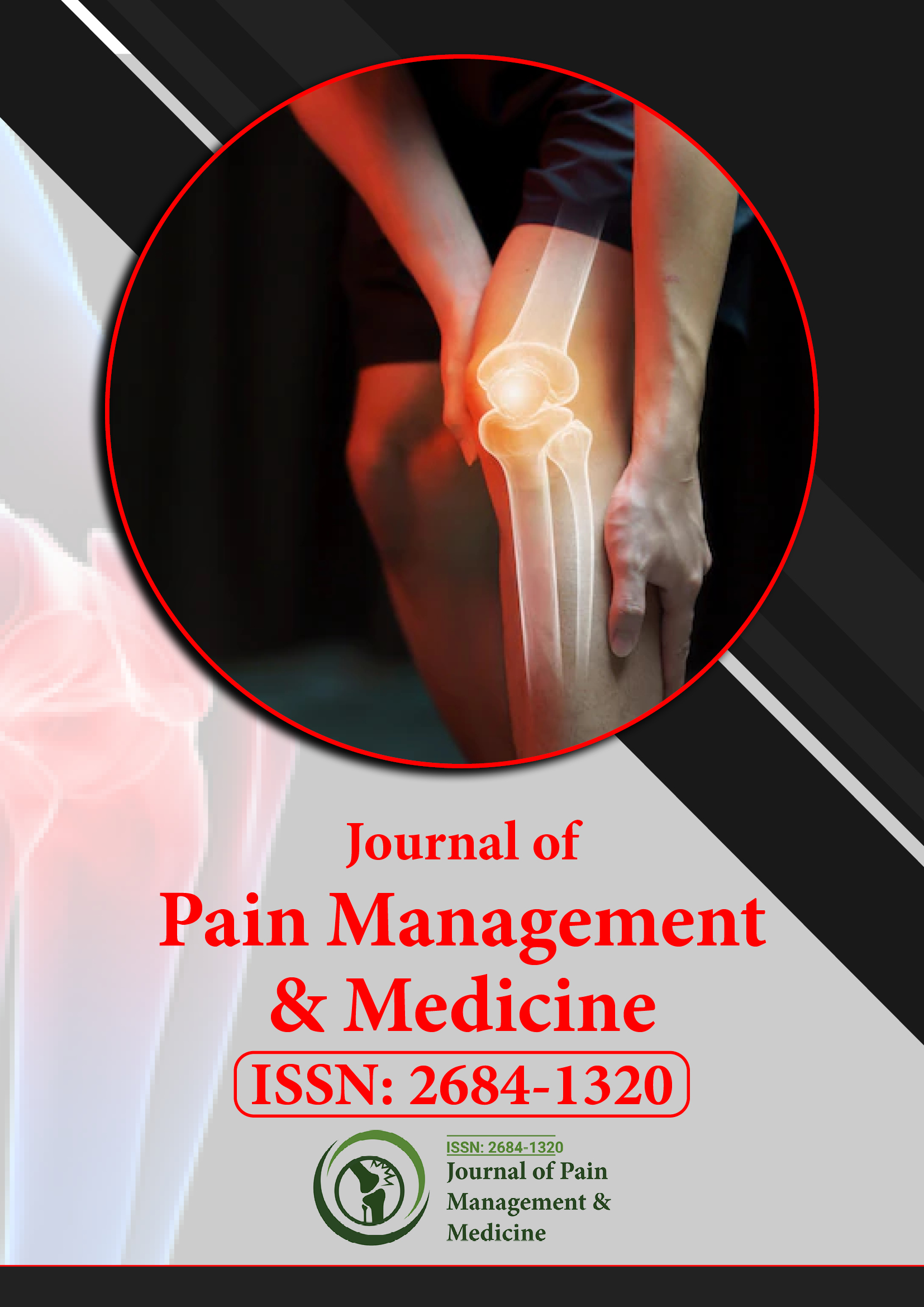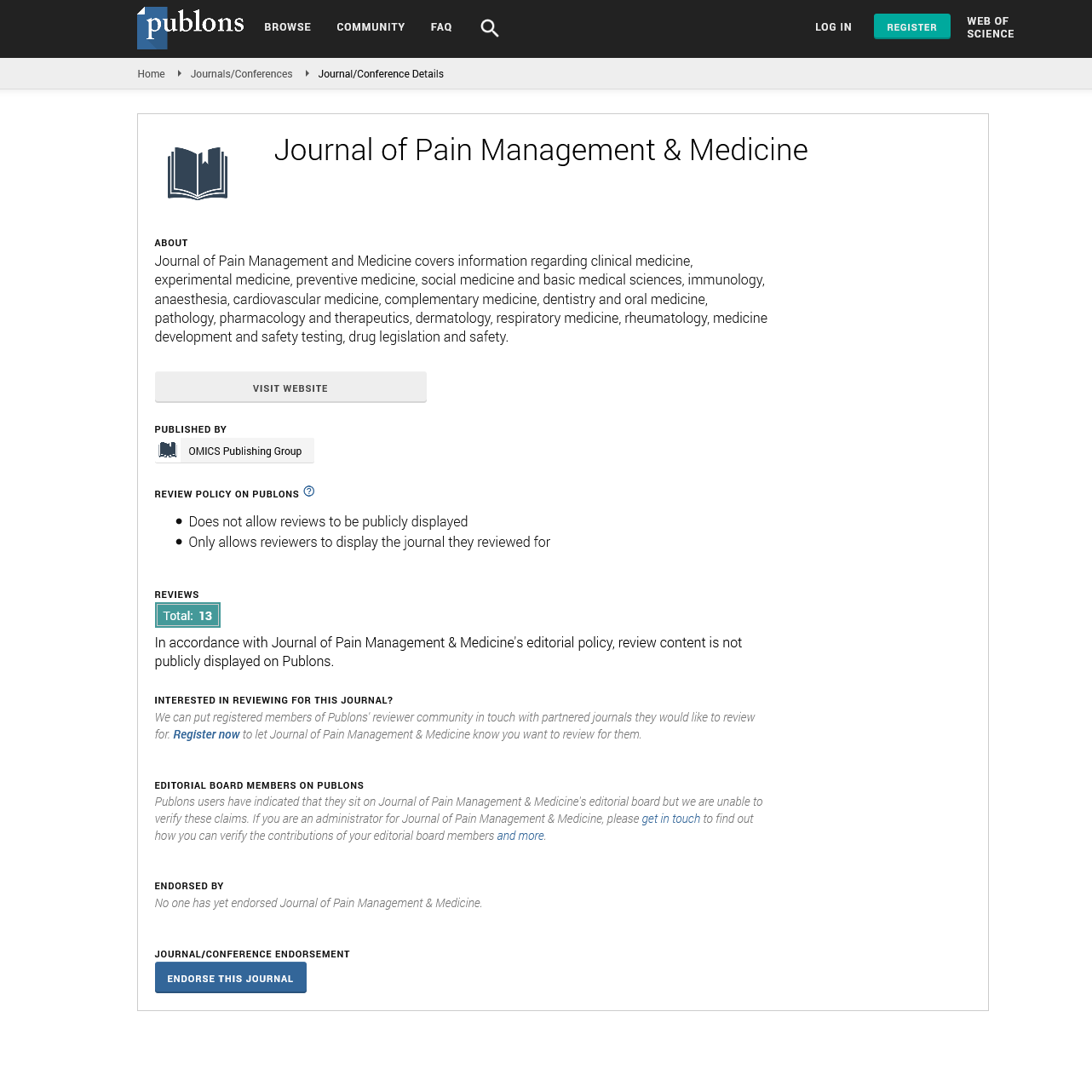Indexed In
- RefSeek
- Hamdard University
- EBSCO A-Z
- Publons
- Euro Pub
- Google Scholar
- Quality Open Access Market
Useful Links
Share This Page
Journal Flyer

Open Access Journals
- Agri and Aquaculture
- Biochemistry
- Bioinformatics & Systems Biology
- Business & Management
- Chemistry
- Clinical Sciences
- Engineering
- Food & Nutrition
- General Science
- Genetics & Molecular Biology
- Immunology & Microbiology
- Medical Sciences
- Neuroscience & Psychology
- Nursing & Health Care
- Pharmaceutical Sciences
Commentary - (2025) Volume 11, Issue 1
Lived Experience of Individuals with Chronic Pelvic Pain: A Qualitative Phenomenological Study
Élodie T. Marchand*Received: 01-Mar-2025, Manuscript No. JPMME-25-28846; Editor assigned: 03-Mar-2025, Pre QC No. JPMME-25-28846 (PQ); Reviewed: 17-Mar-2025, QC No. JPMME-25-28846; Revised: 24-Mar-2025, Manuscript No. JPMME-25-28846 (R); Published: 31-Mar-2025, DOI: 10.35248/2684-1320.25.11.317
Description
Chronic Pelvic Pain (CPP), defined as persistent or recurrent pain in the pelvic region lasting six months or longer, is a complex and often debilitating condition that significantly impacts the lives of affected individuals. Unlike acute pain, which serves as a warning signal, CPP persists beyond the expected healing time and can arise from a variety of underlying causes, or even without a clear identifiable pathology. A qualitative phenomenological study exploring the lived experience of individuals with CPP offers a crucial lens through which to understand the subjective realities of this often-invisible and poorly understood condition. By delving into the essence of their experiences, such research can illuminate the multifaceted impact of CPP, inform clinical practice, and advocate for improved patient care.
One of the most significant contributions of a phenomenological study on CPP is its ability to uncover the deeply personal and subjective nature of this pain. Quantitative measures of pain intensity, while valuable, often fail to capture the qualitative dimensions of the experience – the character of the pain (e.g., burning, aching, stabbing), its location and radiation, its variability, and its impact on daily life. Through in-depth interviews and careful analysis of participants' narratives, researchers can illuminate the unique ways in which individuals with CPP perceive, interpret, and cope with their pain. This understanding is fundamental for clinicians seeking to provide truly patient-centered care.
Furthermore, a qualitative study can explore the profound impact of CPP on various aspects of individuals' lives beyond the physical sensation of pain. This may include the emotional toll of living with persistent and often unpredictable pain, such as feelings of frustration, anxiety, depression, isolation, and loss of control. The study can also shed light on the ways in which CPP affects relationships with partners, family, and friends, often leading to misunderstandings and difficulties in maintaining intimacy and social connections. The impact on work, education, leisure activities, and overall functional capacity can also be deeply explored, revealing the far-reaching consequences of this condition.
The study can also illuminate the challenges individuals with CPP face in navigating the healthcare system. Many individuals with CPP report experiencing delays in diagnosis, difficulties in finding healthcare professionals who understand their condition, and feelings of being dismissed or not believed. Exploring these experiences can highlight systemic barriers to effective care and inform efforts to improve healthcare access, provider education, and communication between patients and clinicians.
A phenomenological approach is particularly well-suited to uncovering the coping mechanisms and strategies that individuals with CPP develop to manage their pain and its impact. This may include both active coping strategies, such as exercise, alternative therapies, and self-management techniques, as well as more passive strategies. Understanding these coping mechanisms, both effective and ineffective, can provide valuable insights for developing and tailoring support and intervention programs.
The study can also explore the meaning-making processes that individuals with CPP engage in as they attempt to understand and integrate their chronic pain experience into their lives. This may involve searching for explanations for their pain, redefining their sense of self, and finding ways to live a meaningful life despite their limitations. Understanding these processes can inform therapeutic approaches that focus on acceptance, adaptation, and finding purpose in the context of chronic illness.
Moreover, a qualitative study can give voice to the often-silenced experiences of individuals with CPP, particularly those whose pain may not have a clear organic etiology or who may feel stigmatized due to the nature or location of their pain. By amplifying these voices, the research can contribute to greater awareness, validation, and understanding of CPP within both the medical community and society at large.
Finally, the rich and nuanced data generated by a phenomenological study can inform the development of more sensitive and effective quantitative research instruments and clinical interventions for CPP. The themes and insights emerging from the lived experiences of individuals with CPP can provide a foundation for designing questionnaires that capture the most relevant aspects of their experience and for developing interventions that are truly tailored to their needs and priorities.
In conclusion, a qualitative phenomenological study exploring the lived experience of individuals with chronic pelvic pain offers a vital and deeply humanizing perspective on this complex condition. By illuminating the subjective realities of pain, its multifaceted impact, the challenges faced in healthcare, coping mechanisms, and meaning-making processes, such research can contribute significantly to improving clinical care, fostering empathy and understanding, and ultimately enhancing the lives of those living with CPP.
Citation: Marchand ET (2025) Lived Experience of Individuals with Chronic Pelvic Pain: A Qualitative Phenomenological Study. J Pain Manage Med. 11.317.
Copyright: © 2025 Marchand ET. This is an open access article distributed under the terms of the Creative Commons Attribution License, which permits unrestricted use, distribution, and reproduction in any medium, provided the original author and source are credited

